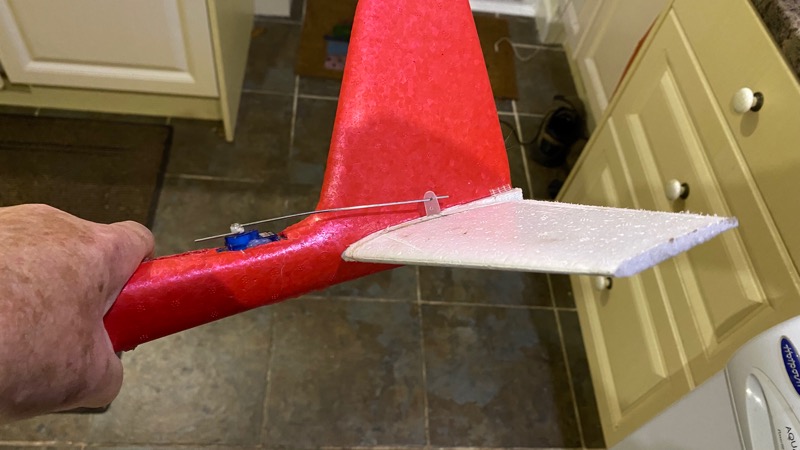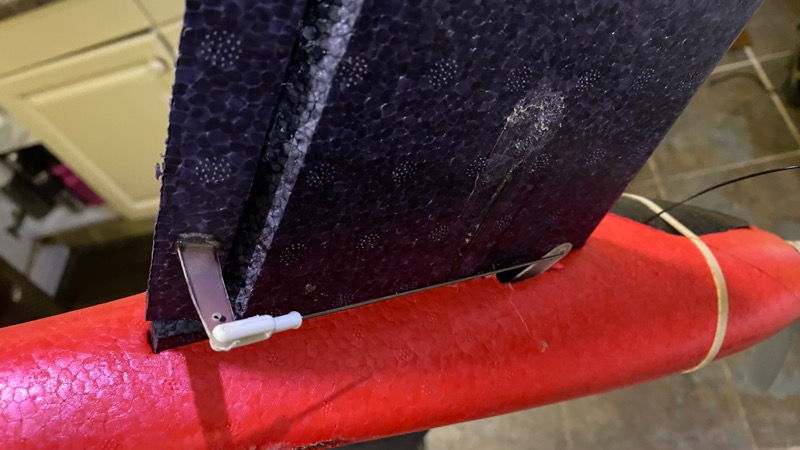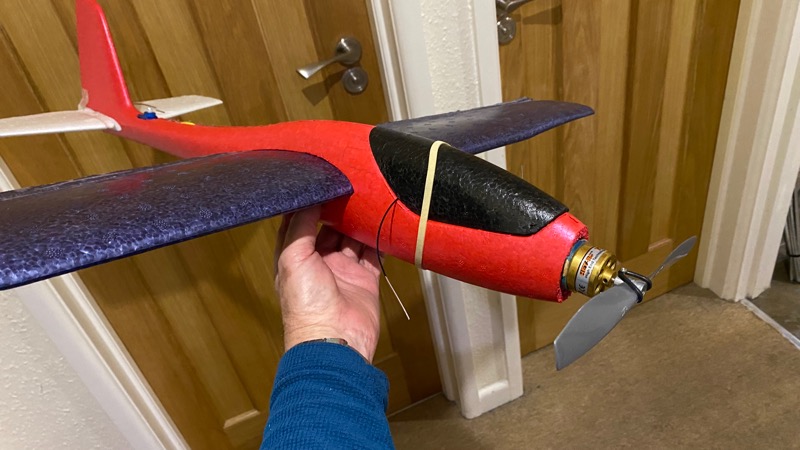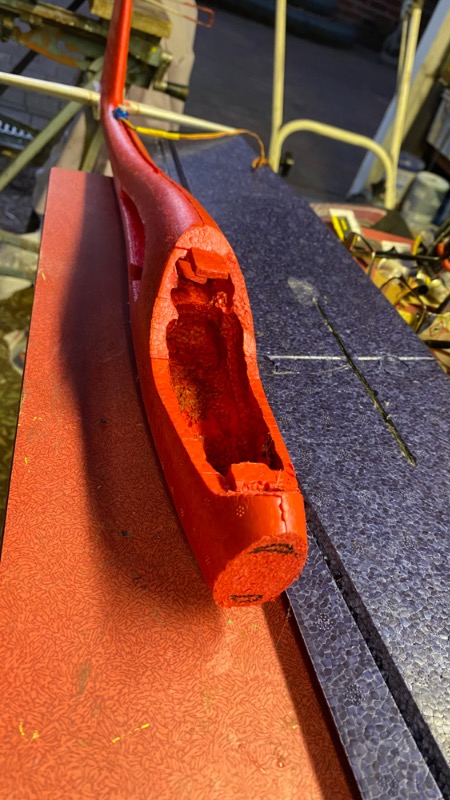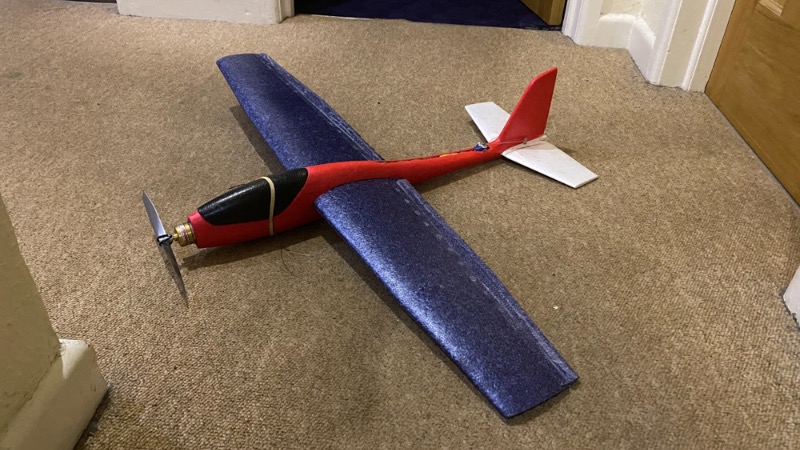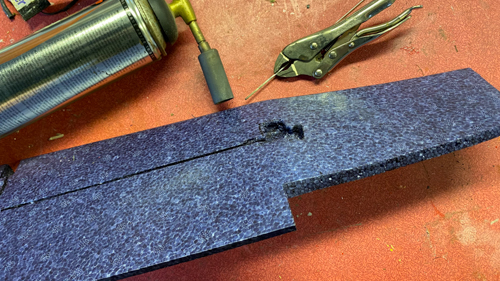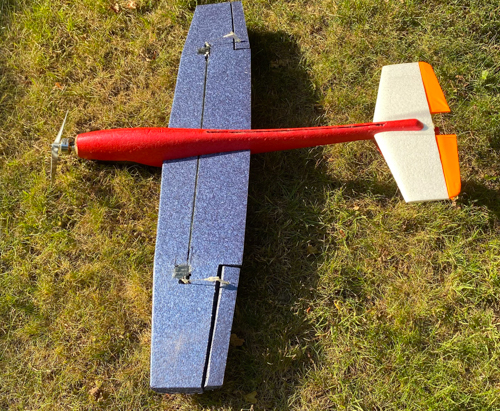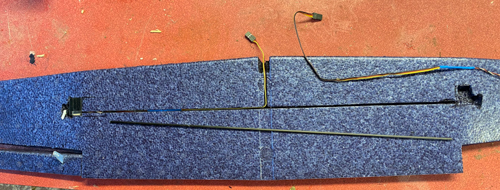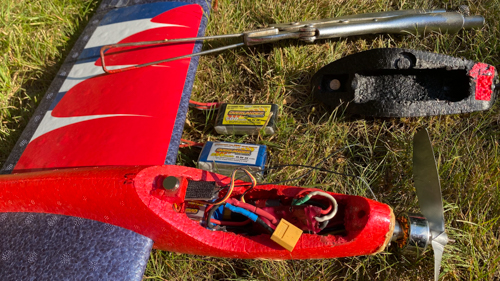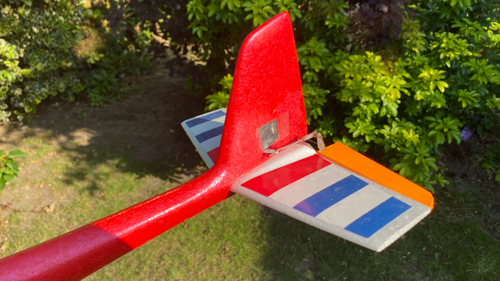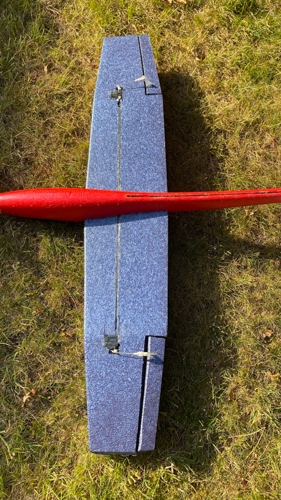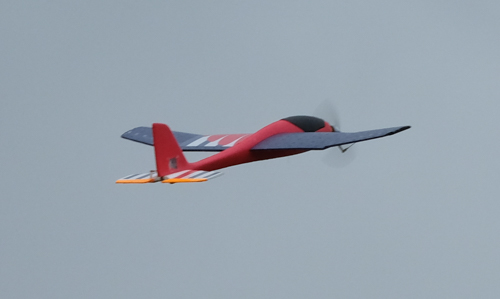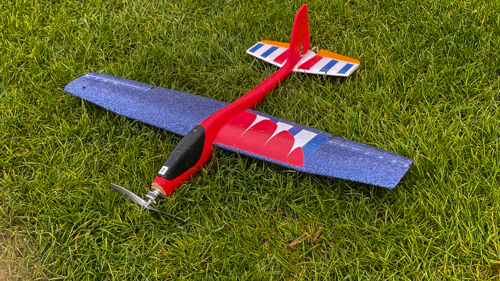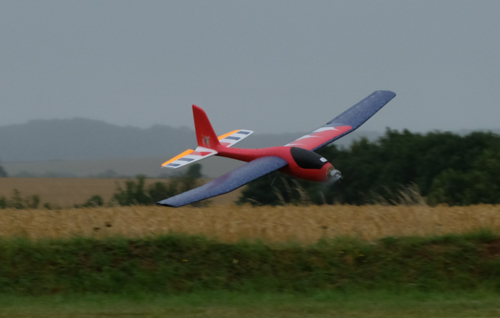- Posts: 23
- Thank you received: 31
Lidl RC Conversion New Plane Version 3 & Glider
- ElectRick
-
 Topic Author
Topic Author
- Offline
- New Member
-

Less
More
2 years 10 months ago - 2 years 10 months ago #26344
by ElectRick
Lidl Glider Conversion was created by ElectRick
Maidened my Little Lidl today. Flew with much less power than I expected. Ailerons had enough authority even though they are quite slim. Flying was a little bit hairy as the all-moving tailplane is quite sensitive. Unfortunately lost control while trying to reduce rates. A more visible wing in the misty morning would have helped. Repairable.The design criteria was to try and produce an aircraft under 250 gm which I failed to do. This is why I chose a centrally located aileron servo which I would not be bothered with if I were to make a MkII. To get the aircraft to balance I had to add weight to the tail even after excavating the inside to place the 1Ah battery hard back against the aileron servo and under the wing trailing edge. A slightly smaller, lighter battery would have helped.
Last edit: 2 years 10 months ago by Phil Ford. Reason: Images inserted which may break out of template. Upload by drag n drop into grey area at bottom of post
The following user(s) said Thank You: 4Pedalsfly, Brian
Please Log in or Create an account to join the conversation.
- ElectRick
-
 Topic Author
Topic Author
- Offline
- New Member
-

Less
More
- Posts: 23
- Thank you received: 31
2 years 10 months ago - 2 years 10 months ago #26360
by ElectRick
Replied by ElectRick on topic Lidl Glider Conversion
Repaired Lidl plane flew well today with smaller, lighter and older (less powerful) 400mAh battery rather than the 1Ah battery for which I excavated with a hot wire the inside of the plane.
Last edit: 2 years 10 months ago by Phil Ford. Reason: Rick, Images edited.
The following user(s) said Thank You: 4Pedalsfly, Brian
Please Log in or Create an account to join the conversation.
- kevinross
-
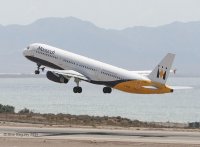
- Offline
- Platinum Member
-

Less
More
- Posts: 1028
- Thank you received: 583
2 years 10 months ago #26361
by kevinross
Replied by kevinross on topic Lidl Glider Conversion
Have you reduced the AUW < 250grms - cos i can't see your ops ID so you may have a prison sentence due - especially with such a high powered and dangerous "Drone" :lol:
Please Log in or Create an account to join the conversation.
- ElectRick
-
 Topic Author
Topic Author
- Offline
- New Member
-

Less
More
- Posts: 23
- Thank you received: 31
2 years 3 months ago - 2 years 3 months ago #26559
by ElectRick
Replied by ElectRick on topic Lidl Glider Conversion Version 2 (Part1)
I maidened my first Lidl’s Glider conversion in December last year (see previous post) and my second in May this year. The modifications were:
- Ailerons on the wing tips employing the standard practice of burying the servos in the wings (The previous model initially had full span ailerons from a single servo in the fuselage.) I angled the aileron hinge line to give more depth at the wing tips to increase aileron authority. After cutting the ailerons out with a knife I “sealed” the edges with a sealing iron at its max temperature
- Used stock dihedral (I have found there is absolutely no reason to remove the dihedral and my previous model where I went to great trouble flattening the wing is trying to revert to the makers mould!)
- Used a more powerful motor see below for stats)
- Moved the elevator servo into the fin to try and balance the motor and battery in the nose (although still a little extra weight added to the tail) Ran the wires internally to a slot underneath the plane.
- Added balsa elevators after squaring off the rear edge (the previous version had an all-flying tailplane)
- Excavated back under the wing leading edge inside the fuselage to allow the battery to be further back.
Last edit: 2 years 3 months ago by ElectRick. Reason: Couldn't see any pictures
The following user(s) said Thank You: 4Pedalsfly, Brian
Please Log in or Create an account to join the conversation.
- ElectRick
-
 Topic Author
Topic Author
- Offline
- New Member
-

Less
More
- Posts: 23
- Thank you received: 31
2 years 3 months ago - 2 years 3 months ago #26560
by ElectRick
Replied by ElectRick on topic Lidl Glider Conversion Version 2 (Part 2)
As before I used 3M “surgical” tape for hinges. I found no need to add reinforcement to tailplane and only put in 3mm rod for wings in-board of the servos on top of the servo wires and then sealed with hot glue. Similarly carbon reinforcement under the fuselage on top of the elevator servo cable. I used a a bicycle spoke bent into a square U-shape, heated in a blow-lamp as my excavation tool inside the cockpit and an unbent one for creating the trenches for the servo wires/reinforcement and holes for the aileron servo wires from cockpit to leading edge, elevator servo wires between fin and fuselage bottom and fuselage bottom to cockpit.The cockpit is held on with pin and magnet.Photos show excavated cockpit with u-shaped tool. Inside the cockpit is a 850mAh batteryThere are 2 additional 500 and 850 mAh batteries to show size. Two other photos showing the tailplane servo arrangement and underside which is very neat without external battery.
Last edit: 2 years 3 months ago by ElectRick.
The following user(s) said Thank You: 4Pedalsfly, Brian
Please Log in or Create an account to join the conversation.
- ElectRick
-
 Topic Author
Topic Author
- Offline
- New Member
-

Less
More
- Posts: 23
- Thank you received: 31
2 years 3 months ago #26561
by ElectRick
Replied by ElectRick on topic Lidl Glider Conversion Version 2 (Part 3)
It flies better than the first. Faster and can be flown in winds stronger than I would any of my other planes - the speed envelope is amazing. It has sharper control than Mark 1 as there is less slack in the control surfaces.StatsWeight 334 gm with 500 mAh and an additional 25 gms with the 850 mAh battery.Motor Turnigy DST1200 turning a 7x6 prop and pulling 14A (158 watts).Wing loading less than 11 oz/sq ftPTW Greater than 200 watts/lb which makes it quite livelyDuration with 850mAh 3S battery greater than 12 minutes even with constant aerobatic manoeuvres.NextModifications to Mark 3 (which will be a pure RC Glider) will be to have a one piece elevator as 4PedalsFly.Flying photos by John Bannister this morning in gusty NE winds
The following user(s) said Thank You: 4Pedalsfly, kevinross, John Bannister, Brian
Please Log in or Create an account to join the conversation.
Moderators: DaveBright
Time to create page: 0.288 seconds
Latest Posts
-
-

- Various Gliders from Dave Ambrose ex W.M.A.C Membe...
- In WimborneMac Members / For Sale - Exchange - Wanted
- by 4Pedalsfly
- 1 week 1 day ago
-
-
-

- Ray Ivey's Models
- In WimborneMac Members / For Sale - Exchange - Wanted
- by Phil Ford
- 2 weeks 8 hours ago
-
©
2009 - 2025
WMAC PCF Design

